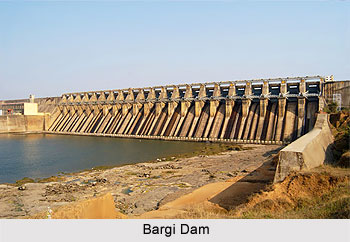 One of the major dams in Madhya Pradesh, Bargi Dam is of its first kind across the river Narmada. The Bargi Dam is situated near the Bijora Village, around 40 km southwest of Jabalpur city.
One of the major dams in Madhya Pradesh, Bargi Dam is of its first kind across the river Narmada. The Bargi Dam is situated near the Bijora Village, around 40 km southwest of Jabalpur city.
The construction work of Bargi Dam was started in 1974. Bargi Dam is a small dam, completed in 1990 when the dam was filled to its complete capacity. A major water source of the region, the Bargi Dam is also used for power generation. The dam site is opened for visitors round the year till late evening. The fishing community living in and around the dam has formed a fishing co-operative society for proper income. The scenic Temar falls is the most frequented nearby attraction.
The plan of building a chain of 30 major dams on the Narmada River in Madhya Pradesh was steadily in progress, and Bargi Dam is one of the first completed Dams amongst the list. The Narmada is the largest river in Madhya Pradesh and flows towards the west and falling emptying into the Arabian Sea. The total length of River Narmada flowing in Madhya Pradesh is around 1072 km and the Bargi Dam controls this part of the River Narmada waters. The Central Water and Power Commission decided on the proposal of building this dam in 1968 to enhance irrigation in 2,980 square kilometres and hydropower generation capacity of 105 MW.
After few years of the construction of this dam, the Bargi diversion scheme was planned in order to increase the total irrigation potential to 4,370 square kilometres. The height of Bargi Dam is 69 m and length is 5.4 km. The adjacent lake of the Bargi Dam is about 75 km in length and 4.5 km wide, spreading over an area of 267.97 km². The Bargi Dam mainly serves Jabalpur, Mandla and Seoni districts and the water supplied is upto FRL of 422.76 m.



















